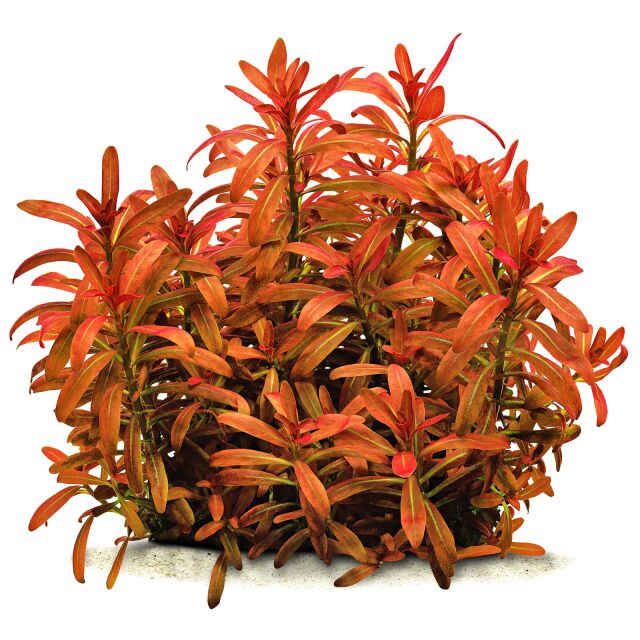
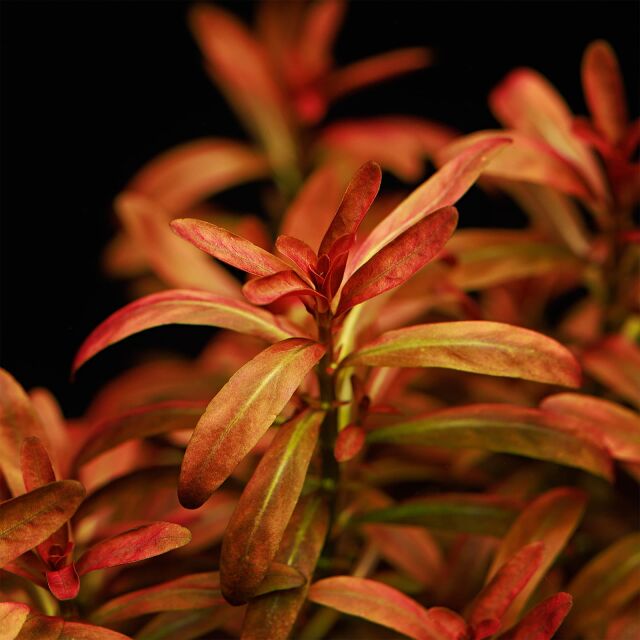
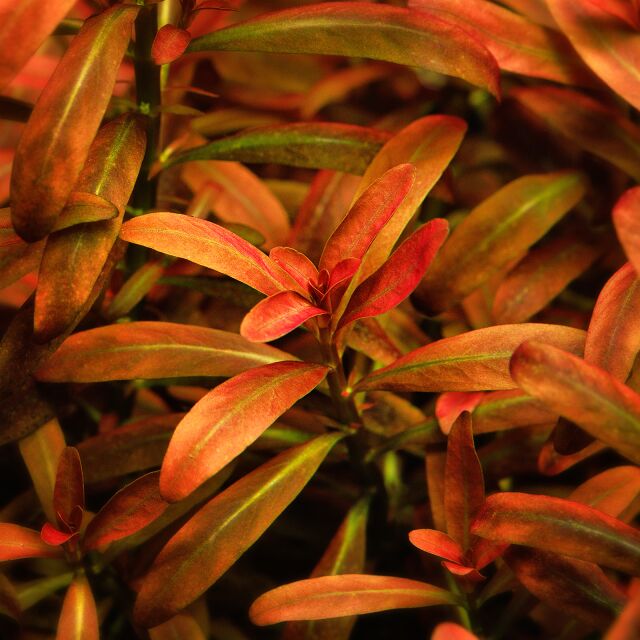
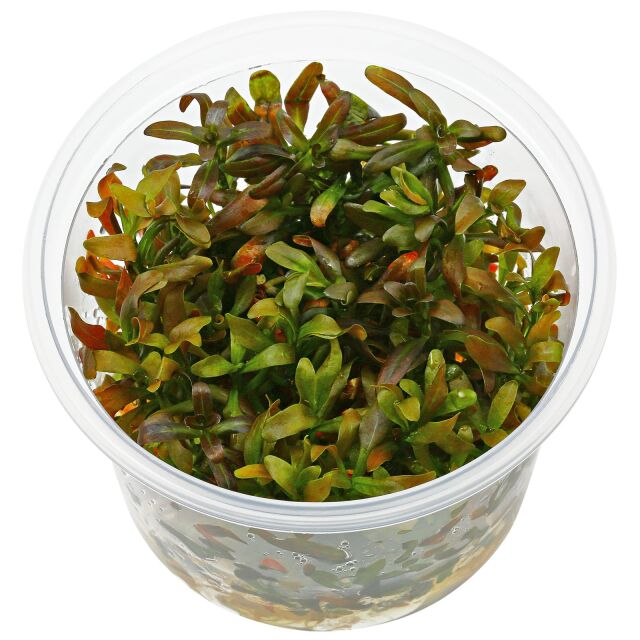

Rotala ramosior "Sunset"
- Also known as "Ammania sp. from Sulawesi"
- Strikingly brown-red leaves with purple tones, green stems
- Upright growth
- Rarely available
Item question
We’re here for you!
Please enter your question and e-mail and we’ll contact you as soon as possible. It usually takes us up to 24 hours during business days to respond.
Thank you for your question!
Thank you, we’ll get in touch!
Close window
You already sent us a question.
Please wait a few minutes
Description
This unique, rarely cultivated Rotala has also become known as "Ammania sp. from Sulawesi". It apparently belongs to Rotala ramosior, an annual species from wetlands from North to South America, which is also naturalised in Asia. Under water, Rotala ramosior "Sunset" forms straight, upright, sparsely branched stems. The elongated, cross-opposite leaves are strikingly brown-red with slightly red-violet tones under favourable conditions. The midrib and leaf base are a contrasting light green colour, and the stems are also green. The shoots are about 4 - 5 cm wide, the leaves 2.5 - 3 cm long and 4.5 mm wide. The stem is about 2 mm wide and densely covered with leaves. The stem nodes are 4 - 5 mm apart.
In addition to "Sunset", there are other R. ramosior forms such as "Florida" and a larger, green form from Virginia. "Florida" differs from "Sunset" in its strong red-violet tones, smaller, elliptical leaves and thinner stems; the plant also grows somewhat more slowly. In Rotala ramosior "Sunset", the more elongated leaves are more upright at the tip and more bent over further down the stem.
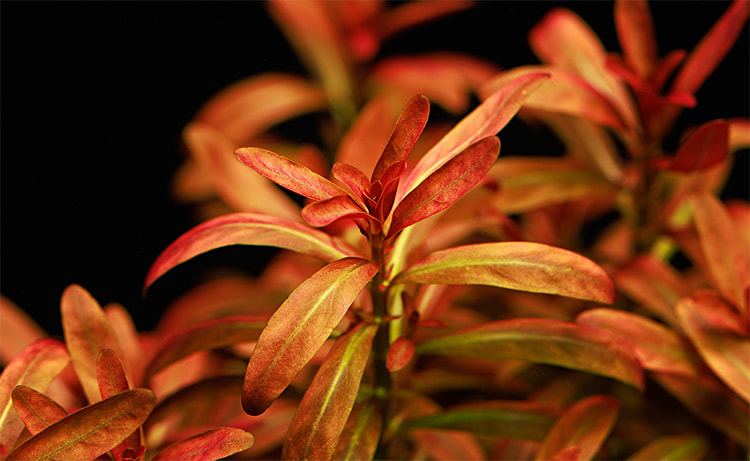
Rotala ramosior "Sunset" has only a moderate growth rate. In our aquaria it has grown to a height of around 10 - 11 cm in one month. It is a demanding, light-loving plant; constant CO2 and macro- and micronutrient supply are recommended. Also fertilisation via the substrate is helpful. Especially young plantlets from tissue culture should only be planted in already cycled, well-running aquariums. As well as other stem plants, this Rotala can be propagated by cuttings. However this has to be done carefully. Rotala ramosior "Sunset" does not well tolerate hard cutting, and its propagation rate is rather low. When the remaining stumps of the stems are too short, they often rather die instead of developing side shoots. It is best to let the plants grow untouched for some time, then terminal cuttings can be made further up. When the stumps are vital enough, they will grow some side shoots that can be used for propagation again. In this way, by selective, careful trimming and replanting of cuttings, a group of the plant can be grown.
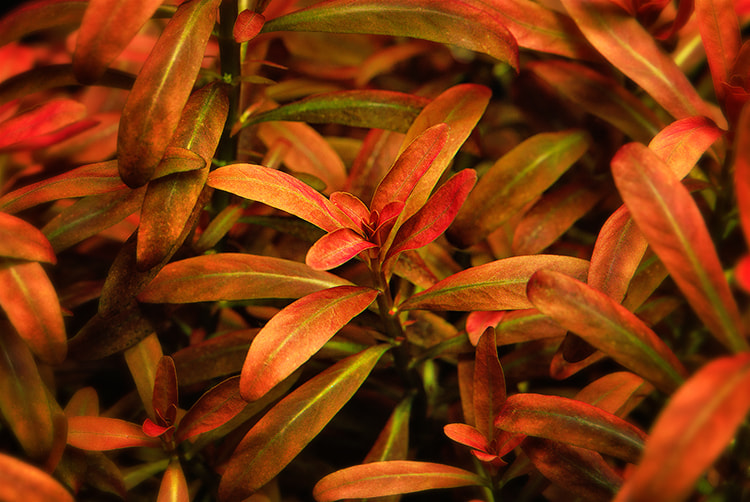
Rotala ramosior "Sunset" is a special gem in the aquarium with its straight, densely leafed shoots and its colour contrast between brown and purple-red leaves and green stems. With its colour tones, this Rotala has an appropriately chosen trade name. The plant looks best as a free-standing group in the midground that is not much taller than 20 cm.
- follows -
| Synonyms | Rotala sp. |
| Complete botanical name | Rotála ramósior (L.) Koehne |
| Family | Lythraceae |
| Genus | Rotala |
| Difficulty | difficult |
| Usage | Accent (red), Midground, Nano tanks, Foreground, group |
| Aquascaping | very colourful plant for accents |
| Growth | slow |
| pH value | 4 - 7 |
| Temperature tolerance | 18 - 30°C |
| Carbonate hardness | 0 - 7°dKH |
| Propagation | Cuttings |
| Can grow emersed? | yes |
| Source | Flowgrow |
| Synonyms |
| Rotala sp. |
| Complete botanical name |
| Rotála ramósior (L.) Koehne |
| Family |
| Lythraceae |
| Genus |
| Rotala |
| Difficulty |
| difficult |
| Usage |
| Accent (red), Midground, Nano tanks, Foreground, group |
| Aquascaping |
| very colourful plant for accents |
| Growth |
| slow |
| pH value |
| 4 - 7 |
| Temperature tolerance |
| 18 - 30°C |
| Carbonate hardness |
| 0 - 7°dKH |
| Propagation |
| Cuttings |
| Can grow emersed? |
| yes |
| Source |
| Flowgrow |
General information
Please choose a variant to see more information.
| Item no. |
|
| EAN | |
| Weight | |
| Shipping weight |
Customers ask customers
You have questions about this product? Ask other customer or our support team about this product!
Customer reviews
One review
| 5 Stars(0) |
|
| 4 Stars(0) |
|
| 3 Stars(1) |
|
| 2 Stars(0) |
|
| 1 Star(0) |
|

The plant should be better protected (there should be bubble wrap in the cup to fill the void between the plant and the lid). (read more)